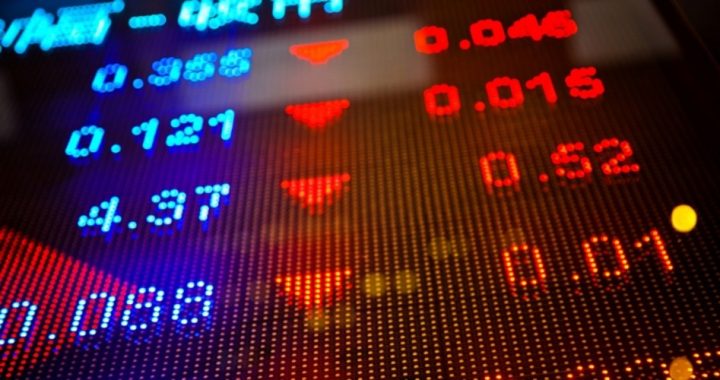
Monday’s selloff in stocks brought the Dow Jones Industrial Average (DJIA) down to 25,377, off more than five percent since early October. Other averages followed suit. Is this decline a harbinger of further declines to come and, more ominously, an end to the one of the strongest economic rebounds in U.S. history?
The president blames the Democrats. On Monday he tweeted that “the prospect of Presidential Harassment by the Dems is causing the Stock Market big headaches.”
Those headaches are likely to be substantial, as far-left House Democrats take over powerful seats in the new Congress. Whether they gain traction is another matter entirely. Featuring such far-left anti-Trumpers as Nancy Pelosi, Maxine Waters, and Elijah Cummings, Democratic efforts could backfire in the 2020 reelection campaigns. Without an apparent legislative agenda, the Democrats will rely on loud and noisy opposition to the president’s policies, which are likely to tire voters two years from now.
The president is already in “retaliation” mode, warning last Wednesday that Democrat subpoenas, harassment, and charges will create a “warlike” atmosphere and that he might do some investigating of them in return.
But are those threats the primary cause of Wall Street’s troubles? Some are blaming Apple, which fell substantially after one of its key suppliers issued a softer-than-expected forecast because of weaker demand from Apple. This caused JPMorgan to cut its price target on Apple.
A cut might just be in order. On January 1, 2009, Apple’s stock was selling at $12.55 a share. As this is being written, it is trading 15 times higher, at $195 a share.
In fact, the overall market might just be due for a breather as well. A year ago, the Dow was trading just below 19,000. Yesterday’s close, despite the selloff, was 35-percent higher, at 25,443.
The blame game included global slowing risks being reflected, it was said, in the sharp decline in the price of crude oil. This was caused, again it was said, by Iranian sanctions being partially lifted, allowing an unexpected million barrels of oil a day to continue to flow from that rogue regime into world markets. OPEC reacted by threatening to withhold half a million barrels of its own daily exports starting next month while at the same time trying to persuade other members of the cartel to cut their own production as well.
As The New American has repeatedly pointed out, it’s the American crude oil producers who can take the blame for lower world oil prices. It is now the world’s largest producer, with still higher production anticipated as DUCs (developed but uncompleted wells) are brought online to fill the newly enhanced pipeline capacities being completed shortly. Add to that the estimate by the International Energy Agency (IEA) just released in its annual World Energy Outlook report that American shale development will allow the United States to produce half of all global oil and natural gas output in less than seven years.
So, no, the softening of oil prices doesn’t portend a coming collapse in the U.S. economy, but instead the exact opposite. With gas prices at the pump dropping by more than 30 cents a gallon, and expectations that they could drop another 50 cents in the next few months, this constitutes a tax-free bonus approaching a dollar a gallon for the nation’s 222 million drivers.
Blamers are also pointing at Trump’s trade dispute with communist China, suggesting that the intransigent Chinese will allow their weak economy to weaken even further rather than come to terms with the American president. Those terms, grant the point, are stout and include concessions concerning the theft of U.S. intellectual property, the subsidizing of critical basic industries in order to weaken the United States, and the manipulation of its currency (and its statistics) in its favor.
There’s another unheralded indicator that the current volatility in stocks is nothing more than that: the languishing prices of precious metals, especially allegedly “safe havens” such as gold and silver. This reflects a lack of concern among investors over the direction of stocks in the long run, based on the outlook for continued profitability of American companies enjoying the Trump recovery.
What’s the real reason for the recent volatility? Could it be just that stocks, particularly in the so-called “tech sector,” have just gotten way ahead of themselves?
Image: Nikada via iStock / Getty Images Plus
An Ivy League graduate and former investment advisor, Bob is a regular contributor to The New American magazine and blogs frequently at LightFromTheRight.com, primarily on economics and politics. He can be reached at [email protected].
Related articles:
OPEC: Do “Whatever it Takes” to Balance Oil Market



